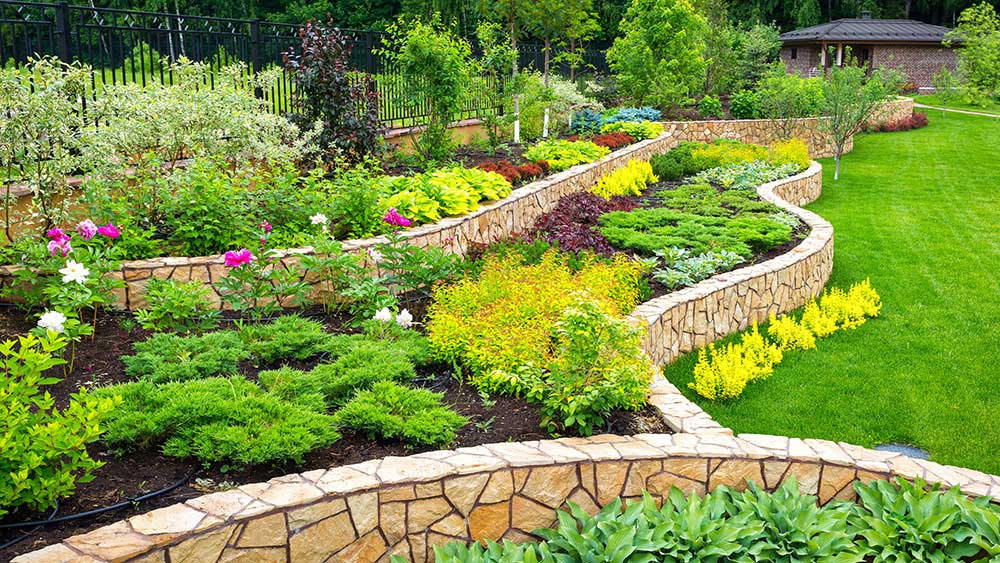Some Known Incorrect Statements About Landscapers
Some Known Incorrect Statements About Landscapers
Blog Article
The Ultimate Guide To Landscapers
Table of ContentsSome Of LandscapersThe Ultimate Guide To LandscapersThings about LandscapersLandscapers for BeginnersAn Unbiased View of Landscapers
- A tree or bush (shrub) that sheds its leaves in winter months. In the PNW there are semi-deciduous or semi-evergreen plants that might lose their fallen leaves depending on exactly how cool the winter is. Abelia and some hebe are good examples. Landscapers. - A flat gathering space, made of wood or composite product (made to look like wood), commonly nearby or connected to a structure.

- Granite that is weathered to the point that it is a very fine accumulation. This is a natural process, and the outcome can be utilized for courses and patio areas. Broken down granite is commonly described as DG. It is particularly useful in modern landscapes. - Secret landscape attributes being proposed in a landscape style strategy.
The smart Trick of Landscapers That Nobody is Talking About
These goals direct the design process, not the designer's style or choices. Typical style purposes in Portland are low upkeep, dry spell tolerant, and pet friendly. - Refine for getting rid of or thinning the dead reduced level of a fully grown grass. Thatch is turf that has died and collected below the environment-friendly blades.
Over time this layer can get really thick and make it hard for water, sunlight, and nutrients to obtain to sections of the turf.- The procedure of gathering and controlling the flow of water on a building. This can be finished with grading, French drains, completely dry wells, permeable surface areas, sump pump, rain yards, and much more.
- A sluggish feeding irrigation system that utilizes versatile tubing and emitters to send out a precise amount of water to each plant. - The capacity of a plant to make it through without much summer season water.
- A yard function where water is stood for by an accumulated rock item, normally a crushed rock or granite. These are most commonly discovered in modern-day and Japanese yard style.- A rock or natural flagstone patio area, path, or walkway built without a concrete base. The base would be compacted crushed rock and the joints would certainly be an aggregate or walkable ground cover.
Indicators on Landscapers You Should Know
- A stone preserving or cost-free standing wall developed without the use of mortar. - A below ground framework that collect water and permits it to reduce percolate right into the soil around it.
Landscape design that is compatible with a websites' environment in both appearance and sustainability without negative effects to the setting. Edging in the landscape is a line of separation that produces aesthetic interest in the garden by dividing one sector from one more section.
Areas can additionally have a feeling of "room" given by trees, other growings, fences, or displays. The landscape near other the entry to a building. A tree, hedge or vine, trained to grow on a wall surface or fence right into a certain pattern. Especially useful for fruit trees, making it easy to collect the fruit and including mess.
A plant that is not native to the location where it will certainly be grown. Thicker bladed lawn grass that spread out via rhizomes.: The degree of soil on your residential or commercial property before bark dust or compost is spread out.
Landscapers - Truths

The objective, factor, or action that a location is be landscaped for. Area for growing plants for viewing, consuming, or physical task.
Rock product, either rounded or fractured, that is reasonably small- usually 1" or less. Low plants that are allowed or motivated to spread out over an area. Can describe any "difficult" yard components including statuary or stones but a lot of generally is made use of to refer to courses, patio areas, and walls.: Height distinction in between the degree of water in a pond (or the degree of the pump if it rests outside the pond) and the upper outlet of water which influences performance of the water pump in gph (gallons per hour). Dense hedges or trees that create a fencing, screen, or border.

Rumored Buzz on Landscapers
Traditional PNW landscapes are casual. A plant that spreads more than wanted, or into habitats where it does damages.
Can consist of head placements and protection, pipe sizing, GPM specifications, and products needed to install this system. Licensed professional that designs landscapes, educated in design and design as well as in horticulture.
The specialist who prepares and establishes landscape jobs, normally at a household or tiny business level with the major design inspiration on growings. Landscape developers usually have less education than Landscape Architects and are not accredited. A completed landscape layout, describing all elements for the brand-new landscape. This usually takes the form of an illustration theoretically.
Calcium product made use of to elevate the pH in soil, which will make it much less welcoming to moss. A water limited HDPE material used underneath fish ponds, streams and waterfalls in water attributes. Using lots of plantings of the exact same selection to fill out an area in the landscape. This can decrease maintenance and water usage in the garden.
Report this page